Kadet, a 1994 National Jeweler Retailer Hall of Fame inductee, helped grow the family-owned retailer in the Chicago area and beyond.
1,564 Jewelry Businesses Ceased Operations in 2016
The figure from the Jewelers Board of Trade includes the U.S. and Canada and represents a 64 percent increase over the prior year.

Warwick, R.I.--Year-end statistics from the Jewelers Board of Trade are what we thought they would be.
After rising sharply throughout the year, the number of retail jewelers, wholesalers and manufacturers in the United States and Canada that closed down in 2016 totaled 1,564, compared with 956 in 2015.
That is a 64 percent year-over-year increase.
Breaking it down by category, there were 1,190 retail jewelers in the U.S. and Canada that ceased operations, up 53 percent from 2015; 235 wholesalers, up 81 percent; and 139 manufacturers, up 190 percent.
Including consolidations (sales/mergers) and bankruptcies, the total number of business discontinuances reached 1,718 in 2016, a 54 percent increase over 2015.
In an interview with National Jeweler on Tuesday, JBT President Anthony Capuano said the fact that business discontinuances increased did not surprise him, though end number of closures was slightly higher than expected.
RELATED CONTENT: Demographic Drop-offHe said that the main factor driving the increased rate of closures is that many business owners are at or near the age of retirement, and they are finding themselves at the helm of companies that are no longer as robust as they once were with, in many cases, no next generation waiting to enter the family business.
RELATED CONTENT: What It Feels Like to Close My StoreDuring the interview, Capuano also addressed an online conversation that cropped up following publication of the JBT’s third quarter statistics about jewelers shuttering their stores but remaining in the business either as private, appointment-only jewelers or custom designers.
The commenter felt that the JBT’s numbers for jewelry store closures were inflated because they did not take into account these individuals, but Capuano said they are not.
“That might be some of them, but it’s certainly not 1,190 of them.
“I don’t believe that 1,190 (jewelers) are going to home businesses, or seasonal businesses or part-time businesses. I think the majority of them are just discontinuances,” he said.
He added that even if some jewelers are remaining active in the industry, a store closure “still represents a contraction in the business; they don’t have a reason to open full time in a distinct location.”
New Business Openings
While more companies continue to exit the industry, new business listings have remained relatively flat over the past three years, with the JBT adding about 260 to 290 new jewelry business listings in the
In 2014, there were 261 new jewelry business recorded by the JBT. The following year, that number rose to 289 but fell again in 2016, to 275. The Northeast and the Southeast accounted for the majority of new listings last year.
“There are people willing to take a chance in this business,” Capuano said.
He also noted that retailers accounted for the vast majority of new businesses in the industry last year. There were 218 new jewelers, compared with 43 wholesalers and 18 new manufacturers.
At the end of 2016, JBT’s total listings stood at 27,950: 21,007 retailers, 4,119 manufacturers and 2,824 manufacturers in North America. That is down 6 percent from 2015.
Here are some other trends for 2016, as outlined by the JBT:
--Bankruptcies continued to decline, totaling 34 in 2016 compared to 40 in 2015. (On a comparative note, that number was three times as high around the peak of the financial crisis.)
Capuano said the jewelry industry is not alone in seeing bankruptcies slide, as it is a trend being seen in many industries nationwide. Company bankruptcies as a whole in the U.S. were down 2 percent year-over-year in the first three quarters of 2016, with what filings there were concentrated in the oil, gas and energy exploration industries.
--Business consolidations (mergers and acquisitions) were relatively flat year-over-year, 118 in 2016 vs. 114 in 2015. Capuano said there are fewer interested parties that want to buy a brand, company or a store in a nearby market today.
--Credit rating metrics remained stable, with an upgrade to downgrade ratio of 0.97x at year-end compared with 0.95x at the end of 2015.
--Collection claim activity was down, and so was the size of the average claim, which fell 8 percent to $7,299.
In 2017, Capuano said he expects consolidation to continue. While the rate at which businesses are closing might abate slightly, he does not expect the trend to reverse itself this year.
The Latest

Billed as the world’s smallest wearable, Lumia Health’s new smart earrings have a health tracker subtly embedded in the back.

Don’t let those with December birthdays feel blue. Help them celebrate their month with blue zircon, turquoise, and tanzanite.

How Jewelers of America’s 20 Under 40 are leading to ensure a brighter future for the jewelry industry.

The new pink sapphire version of the piece dances with its wearer in the brand’s “Icons After Dark” holiday campaign.


A choice that’s generated a lot of commentary, Pantone says “Cloud Dancer” marks a fresh start and encourages relaxation and creativity.

The manufacturer’s holiday campaign features a gift guide filled with trending designs and jewelry that can be personalized.

Roseco’s 704-page catalog showcases new lab-grown diamonds, findings, tools & more—available in print or interactive digital editions.

The man was charged with theft, accused of ingesting the necklace while in a jewelry store in Auckland, New Zealand.

The Florida independent expanded its store from 8,000 to 14,000 square feet, fulfilling the vision of its late co-founder, Jim Dunn.

Sponsored by De Beers Group
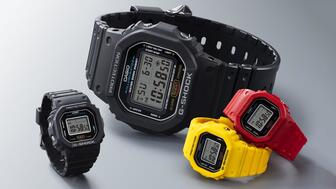
The classic 5600 series G-Shock has been scaled down to about a tenth of its size, becoming a fully functioning watch ring.

The association’s annual conference and gala will take place Feb. 4, 2026, during the Tucson gem shows.

The January show will include a workshop for jewelry retailers on implementing AI to strengthen their businesses.
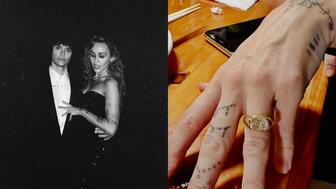
Fellow musician Maxx Morando proposed to the star with a chunky, cushion-cut diamond ring designed by Jacquie Aiche.

The retailer, which sells billions in fine jewelry and watches, is suing the Trump administration and U.S. Customs and Border Patrol.

The historic egg, crafted for Russia's ruling family prior to the revolution, was the star of Christie’s recent auction of works by Fabergé.
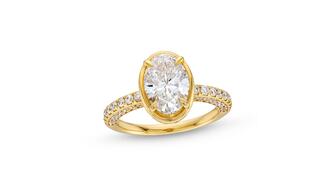
The retailer offered more fashion jewelry priced under $1,000, including lab-grown diamond and men’s jewelry.

The eau de parfum is held in a fluted glass bottle that mirrors the decor of the brand’s atelier, and its cap is a nod to its “Sloan” ring.

Vivek Gadodia and Juan Kemp, who’ve been serving as interim co-CEOs since February, will continue to lead the diamond mining company.

In addition, a slate of new officers and trustees were appointed to the board.
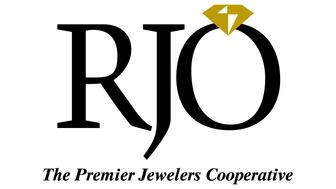
Witt’s Jewelry in Wayne, Nebraska, is the organization’s new milestone member.

Laurs is the editor-in-chief of Gem-A’s The Journal of Gemmology and an expert on the formation of colored gemstone deposits.
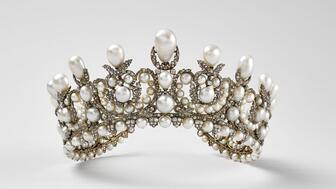
The man, who has a criminal history, is suspected of being the fourth member of the four-man crew that carried out the heist.
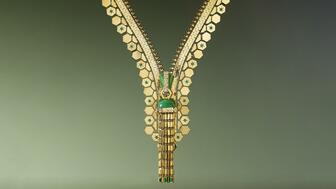
The single-owner collection includes one of the largest offerings of Verdura jewels ever to appear at auction, said Christie’s.
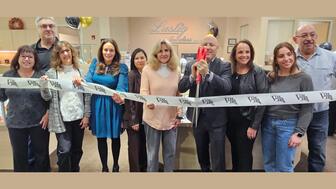
Michael Helfer has taken the reins, bringing together two historic Chicago jewelry names.

The guide features all-new platinum designs for the holiday season by brands like Harwell Godfrey, Ritani, and Suna.


























